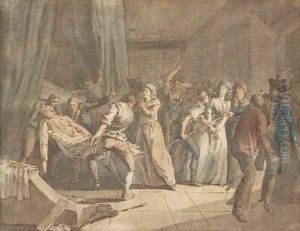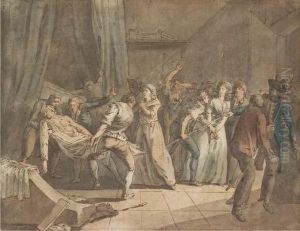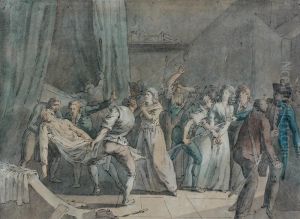Louis Brion De La Tour Paintings
Louis Brion de La Tour was an 18th-century French cartographer and geographical engineer who is best remembered for his maps and atlases. Born in 1743, Brion de La Tour's contributions to cartography came during a period of significant advancement in mapmaking, coinciding with the Age of Enlightenment. Despite the limited technology of his time, Brion de La Tour's work reflected a high level of detail and accuracy, characteristic of the increased rigor in the scientific disciplines, including geography.
Brion de La Tour held the title 'Ingenieur-Geographe du Roi', which translates to 'Engineering Geographer to the King'. This prestigious position underscored his role in creating maps and geographical works for the French monarchy, and it also suggests that he was engaged in the technical aspects of mapmaking, including surveying and the scientific principles underlying accurate cartography.
Over his career, Brion de La Tour published a wide variety of atlases and individual maps. Among his notable works were the 'Atlas Général, Civil et Ecclésiastique', 'Atlas Général et Élémentaire', and 'Histoire Universelle depuis le commencement du monde jusqu'à présent'. These publications often contained thematic maps, including political, historical, and astronomical maps, which were widely used as educational tools as well as for navigation and territorial administration.
Brion de La Tour's maps are distinguished by their decorative elements, which include elaborate title cartouches and vignettes that were common in the cartographic styles of the period. Despite these embellishments, his work remained focused on providing useful and up-to-date information to his users. His maps would often be updated to reflect new discoveries or political changes, illustrating the dynamic nature of geography during this period.
Unfortunately, not as much is known about Brion de La Tour's personal life compared to his professional achievements. He passed away in 1803, leaving behind a legacy as a skilled and dedicated cartographer who contributed to the rich tradition of French mapmaking. His works can be found in various historical map collections and are of interest to those studying cartography, geography, and history.


